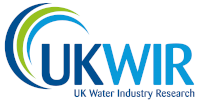UKWIR Water Mains Cleaning Decision Support Tool
Project (WM18A204) - Mains cleaning: Best practice review
INTRODUCTION
This Decision Support Tool (DST) has been developed as part of the UKWIR Mains Cleaning project. The project has identified currently available innovative and traditional techniques (methods of carrying out the task e.g., flushing) and technologies (specific equipment designed to carry out the task e.g., Typhoon Jetting System) available to clean water mains, and to assess the benefits of each of them taking into consideration several factors, e.g., mains condition, aggressiveness of the cleaning intervention, the sampling frequency post cleaning.
The aim of the DST is to assist water companies in identifying the right technology(ies) for cleaning networks of different characteristics. Every cleaning project brings different challenges, with factors such as the pipe material, diameter, and environment (urban/rural setting) changing. The aim of this DST is to help select and highlight a range of suitable solutions for a specific cleaning task as well as their relative advantages/limitations.
The DST should be used in conjunction with the Good Practice Guidance Document for mains cleaning that has also been developed for the UKWIR Mains Cleaning Project.
HOW IT WORKS
Technology Shortlisting
The selection of a suitable technology for a cleaning job is a 2 step process:
- Open the ‘Pipe Criteria Selection’ tab In order to shortlist technologies in line with the characteristics of the network to be cleaned, then:
a. Select the Pipe Material and targeted Challenge by putting an "X" underneath the corresponding label; one or more can be selected at the same time.
b. To select the exact pipe diameter, select the diameter from the drop down list of standard pipe sizes
c. Press the "Enter" button. - Go to the ‘Technology Shortlist’ tab, which provides an overview of potentially appropriate technologies based on characteristics entered. Further, it provides a relative comparison concerning the level of risk associated with the different technologies related to impacting customer, water quality and infrastructure (definitions are included above each criteria). Depending on the user's specific requirements, the user can then select an appropriate technology by clicking on the Technology Name, and a hyperlink will take the user to the selected entry on the ‘Technology Overview’ tab, which contains more detailed technical and operational information for each technology. On the The 'See all' button will display all of the technologies available regardless of the selection, the 'Refresh Filter' button will revert back to the selection made on the 'Pipe Criteria Selection' tab and filter accordingly and the 'Back to Search' button will take you back to the 'Pipe Criteria Selection' in order for you to make a new selection.
New Data Entry / Data change
To allow the DST to stay up to date, users can change information concerning the different technologies. A 'Record and Tracking' tab has been provided to allow water companies to track internally when, by whom and why changes to the DST have been made (Changes to the 'Record and Tracking' need to be input manually).
Add new technologies
A data entry sheet for including new technologies has been provided on the ‘New Data Entry’ tab. This allows users to add new solutions coming to market over time. The benefit of using the new data entry sheet is that, once the ‘Submit’ button is pressed, both the ‘Technology Shortlist’ as well as ‘Technology Overview’ tab is automatically populated as well as ensuring that the underlying macro recognises the information entered.
Update/change information
Any information on the ‘Technology Shortlist’ and ‘Technology Overview’ sheet can be changed and updated using standard Excel features. When doing so please ensure new inputs align with the format currently used. For example, when changing the Pipe Diameter range or Challenge this should correspond with the format used in other cells to allow the underlying macros to recognise and continue including the specific technology when selections are being made. Should information be updated/changed manually on the ‘Technology Shortlist’ tab, this will also have to be updated on the ‘Technology Overview’ tab and vice versa.
DISCLAIMER
The DST is not a stand-alone document and it is to be used in conjunction with the UKWIR Mains Cleaning Good Practice Guidance Document to inform users on appropriate measures to consider before, during and after cleaning has taken place.
Special care must be taken when planning and carrying out cleaning of unlined cast iron mains due to the associated risk of PAH leaching. For further information please refer to Section 5.4 of the Good Practice Guidance Document.


